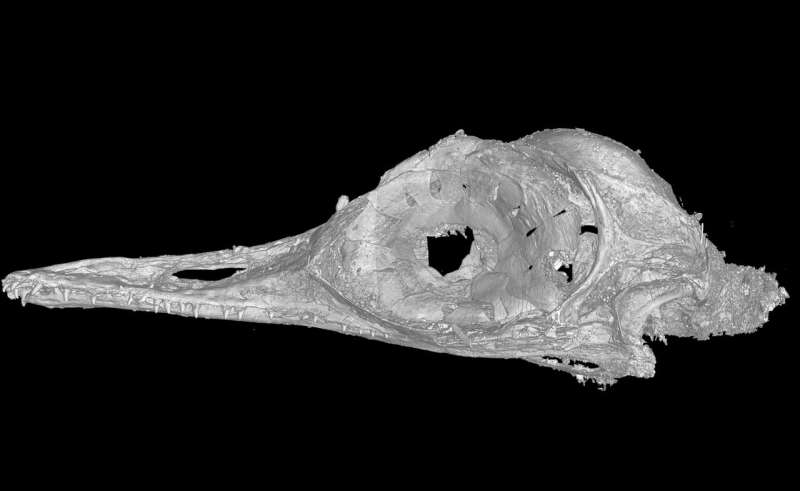July 24, 2020 report
Paper describing hummingbird-sized dinosaur retracted

The journal Nature has issued a retraction for a paper it published March 11th called "Hummingbird-sized dinosaur from the Cretaceous period of Myanmar." The editorial staff was alerted to a possible misclassification of the fossil embedded in amber, and after review, agreed with the assessment and issued the retraction.
When the paper was published, many mainstream publications were intrigued by the story and wrote about the findings, giving the team from China, the U.S. and Canada a bit of notoriety. But shortly thereafter, others in the field began questioning the categorization of the fossil—many suggested it appeared to be a lizard, which is a different group of reptiles from the dinosaurs.
The specimen in question is a very small skull embedded in amber, believed to be approximately 100 million years old—dating it to the time of the dinosaurs. The researchers described the specimen as a bird-like skull less than two centimeters in length—approximately the size of a hummingbird skull. And its mouth was filled with teeth.
Some in the field were so sure that it was a lizard and not a dinosaur that they wrote and uploaded a paper to the bioRxiv preprint server outlining their concerns. The authors of the paper then published a response addressing their concerns and refuting the skeptics' arguments. That was followed by another team reporting that they had found a similar fossil and after studying it, had deemed it to be a lizard. In reviewing both the paper and the evidence presented by others in the field, the editors at Nature chose to retract the paper.
The researchers who published the original paper appear to be divided on their assessment of the retraction, with some insisting there was no reason for the paper to be retracted and others acknowledging that they had made a mistake when they classified their find as a dinosaur. In either case, all of the researchers agree that the work they did on the fossil was valid and thus the paper could be used as a source by others in the future—it is only the classification of the find that has been put in doubt.
More information: Lida Xing et al. Retraction Note: Hummingbird-sized dinosaur from the Cretaceous period of Myanmar, Nature (2020). DOI: 10.1038/s41586-020-2553-9
Journal information: Nature
© 2020 Science X Network



















